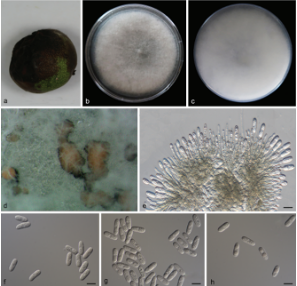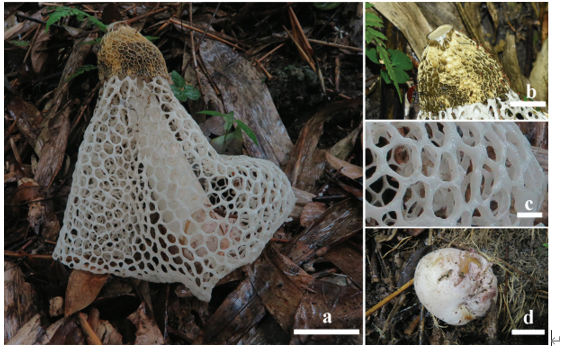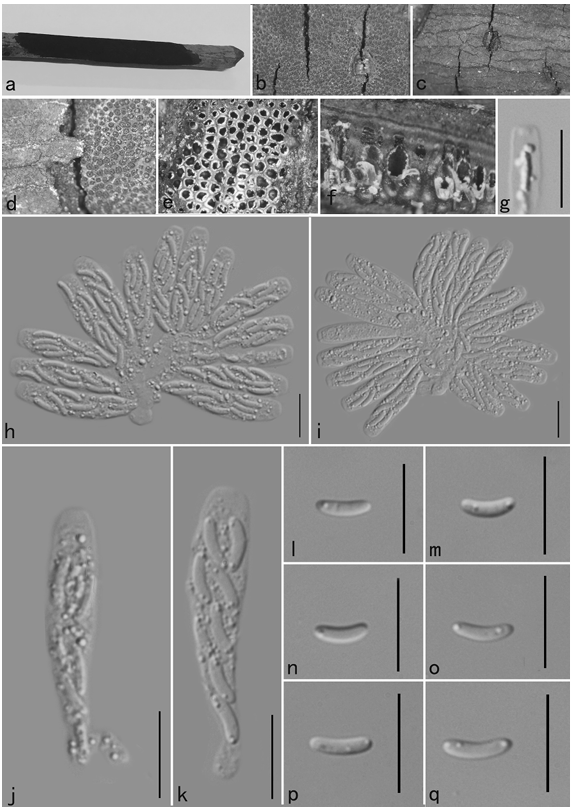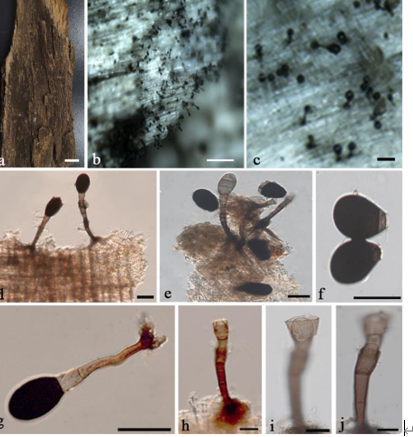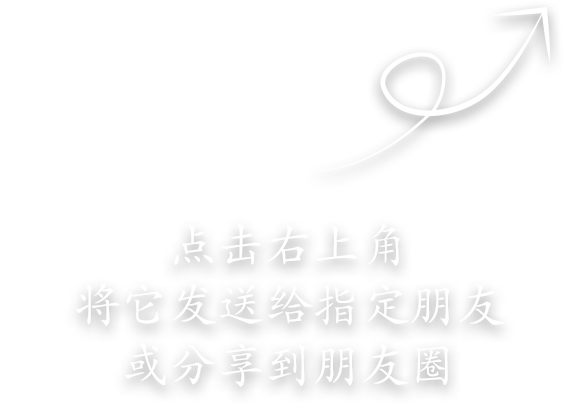Distoseptispora lancangjiangensis H.W. Shen, H.Y. Su, K.D. Hyde & Z.L. Luo, sp. nov.2021
Index Fungorum Number No: IF558555
Facesoffungi Number No: FoF09994
Holotype: KUN-HKAS 112712
Morphological description
Sexual morph: Undetermined.
Asexual morph: Colonies effuse, hairy, glistening, brown to dark. Mycelium partly immersed in the substratum, composed of hyaline to pale brown, septate, branched hyphae. Conidiophores 144–204 × 5–6 μm (x¯ = 175 × 6 μm, n = 20) macronematous, mononematous, solitary, inflate at the base, cylindrical, straight or slightly flexuous, 6–11-septate, dark brown, hyaline and rounded at apex. Conidiogenous cells 12–24 × 4–5 μm (x¯ = 18 × 5 μm, n = 20) integrated, terminal, monoblastic, cylindrical, brown. Conidia 64–84 × 9–10 μm (x¯ = 74 × 10 μm, n = 20), acrogenous, solitary, narrowly obclavate or obspathulate, tracted at base, tapering towards apex, 3–10-euseptate, brown to dark brown, thin-walled, becoming paler or hyaline towards apex, guttulate, with a darkened scar at base, smooth-walled.
Cultures: . Conidia cultivated on PDA within 12h and germ tubes produced at the apex. Colonies on PDA, reaching 4.5 cm in 1 month at room temperature (25 °C). Mycelium loose, flocculent, smooth edges, convex middle, pale brown to dark brown on the surface of PDA. Smooth, black on the reverse.
Habitat: on submerged decaying wood
Distribution: China, Yunnan Province, Dali City, Lancangjiang River,
GenBank Accession: (DLUCC 1864 = CGMCC 3.20265).
Notes: . Phylogenetic analysis showed that Distoseptispora lancangjiangensis clustered as a sister taxon to D. suoluoensis with 97%ML/0.98PP support. Distoseptispora lancangjiangensis is similar to D. suoluoensis in having long conidiophores, monoblastic conidiogenous cells, and obclavate to rostrate, euseptate conidia. However, D. suoluoensis has yellowish-brown or dark olivaceous, verrucose conidia, while in D. lancangjiangensis conidia are brown to dark brown and smooth-walled. Moreover, D. lancangjiangensis has smaller conidia than those of D. suoluoensis (64–84 × 9–10 μm vs. 80–125 × 8–13 μm) (Yang et al. 2018). Distoseptispora lancangjiangensis and D. bambusae have similar conidial shapes, but D. lancangjiangensis is having longer conidia (64–84 × 9–10 μm vs. 45–74 × 5.5–10 μm) and longer conidiophores (144–204 × 5–6 μm vs. 40–96 × 4–5.5 μm). Furthermore, D. bambusae has polyblastic or monoblastic conidiogenous cells and olivaceous or brown conidia, while D. lancangjiangensis only has monoblastic conidiogenous cells and brown to dark brown conidia (Sun et al. 2020).
Reference: [1] Song, H. Y. , Sheikha, A. F. E. , Zhai, Z. J. , Zhou, J. P. , & Hu, D. M. . (2020). Distoseptispora longispora sp. nov. from freshwater habitats in china. Mycotaxon -Ithaca Ny-, 135(3), 513-523.
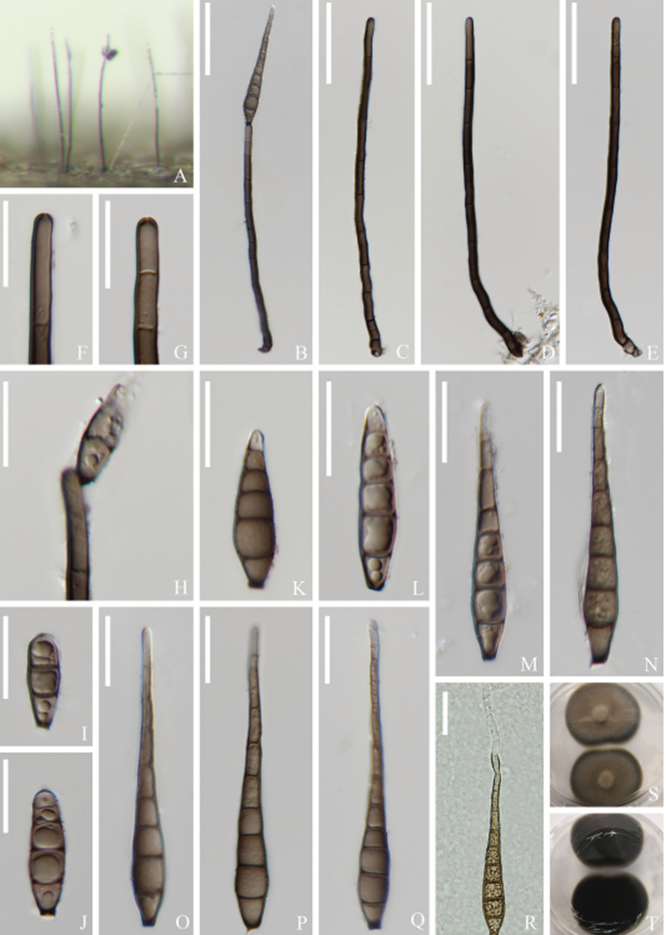 Distoseptispora lancangjiangensis (KUN-HKAS 112712, holotype) A colonies on the substratum B conidiophore and conidium C-E conidiophores F, G conidiogenous cells H conidiogenous cell with conidium I-Q conidia R germinating conidium S, T culture on PDA. Scale bars: 50 μm (B-E); 20 μm (F-R)
Distoseptispora lancangjiangensis (KUN-HKAS 112712, holotype) A colonies on the substratum B conidiophore and conidium C-E conidiophores F, G conidiogenous cells H conidiogenous cell with conidium I-Q conidia R germinating conidium S, T culture on PDA. Scale bars: 50 μm (B-E); 20 μm (F-R)


